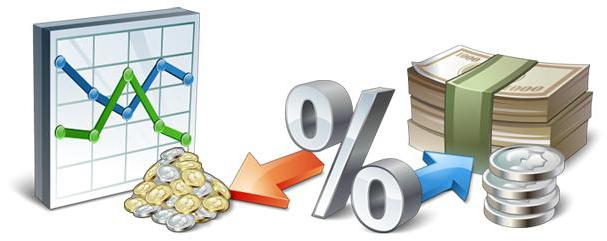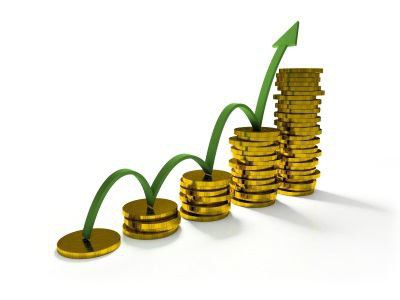What is margin and where does it apply? We will try to answer this question as clearly as possible. Many have heard of this concept, but sometimes misunderstand the meaning. Especially the question of what is the margin, beginners ask, mistakenly believing that this is a trade margin. This, of course, is close by definition, but false. Let's try to figure it out.
The first thing I want to pay attention to is that this term has different meanings. For example, the answer to the question of what is margin, banking workers will give a little different than stock brokers. But first things first.
Concept in economic theory
Economic theory interprets this concept as the difference between the price of goods and cost. How to calculate margin? It is determined by a completely understandable formula.
The price of the product (P) minus the cost of production (C) divided by the price of the product (P) multiplied by 100 percent. The mathematical formula will look like this:
M = (P-C) / P * 100%.
Indicators can be in any currency.
For example, the cost of 1 kg of apples is 50 rubles, and the store sells it for 75 rubles. Thus, the margin will be calculated as follows:
(75-50)/75*100%= 33,3%.
Analyst economists and auditors who analyze the economic activity of an enterprise are especially interested in the concept of gross margin. It represents the difference between the proceeds from the sale of the product and the additional costs of the company. Included here variable costs which directly depend on the volume of production. For example, services of loaders in unloading and unloading goods, temporary placement of products in a rented warehouse, etc. Thus, based on economic theory, the question of what is margin can be answered in simple words as follows: this is a percentage of net profit of an organization .
I would like to note that this concept in our country is slightly different from the European definition. In the West, this is the interest rate of the ratio of profit to sales of goods at the selling price. That is, a deeper understanding for analysis. Its purpose is to evaluate the effectiveness of the company's trade and economic activity. In the Russian Federation, everything is much more commonplace. The question of what margin is in trading can be answered with one sentence. This is the company's profit from the transaction. That is, the difference between the sale price and all expenses of the enterprise, expressed as a percentage.
What is banking margin
The concept in the banking sector is closely related to credit obligations. It is understood that this is the difference between the amount being handed over to the borrower and the amount that must be returned under the contract. This is the so-called credit margin. But there is another concept that is directly proportional to bank profit - bank margin. This is the difference between the rates on loans and deposits. There is the concept of "net interest margin." This is the difference between the interest income of a bank or any other credit institution and the rate on obligations.
For example, the bank was issued with deposit funds in the amount of 1 million rubles at 15 percent per annum. He issued loans for the same amount. But now the rate was 25 percent per annum. Total difference of 10 percent. But that is not all. 5 percent goes to cover non-payment or insurance claims. Total net interest margin is 5 percent of deposit funds.
In the banking sector, there is still a guarantee margin. It is associated with a product such as a secured loan. This is the difference between the value of the collateral or cash and the size of the loan issued to the hands.
Banking example
We give an example of how to calculate the margin in this case. The Bank issued secured by real estate in the amount of 1 million rubles. The market value of the collateral is 1.5 million. The borrower is obliged to repay the amount of 1.7 million for the entire lending period. Thus, upon return the guarantee margin will be 0.7 million rubles. If you refuse to pay for obligations, the bank will take the property. In this case, its amount will be in the amount of 0.5 million. We hope that they explained what margin is, in simple words.
Use in exchange activities
This concept in exchange trading is associated with such a speculative instrument as futures. This is a debt obligation of their seller in relation to the buyer. Suppose a company is growing wheat. In the spring, she needed additional funds related to field work. Without them, an agrarian company simply cannot grow crops. Bank lending will be too unprofitable economic tool. As an option, the sale of futures or debt obligations for the supply of future crops is used. It is also beneficial for the seller. The price of the crop is usually higher than at the time of sale of obligations.
Futures are constantly resold on exchanges. In addition, there are certain situations in the markets that make the price fluctuate. But what is margin in a given market? This is, first of all, the profit from such fluctuations. We give an example.
A broker (a trader on the exchange market) purchased futures at a price of 160 thousand points on the RTS index, after a couple of minutes the price increased to 161 thousand points and the contract was sold. Hence, the margin, which is called variation, is 1 thousand points.
Difference from margins
This concept on the exchange is quite specific. The more common concept of trading margin. But ordinary people and lay people are often mistaken about her. The most common misconception is equating it with a trade margin.
The difference is easy to determine. Margin is the ratio of profit to the market price of a particular product. In contrast to the trade margin, which is defined as the ratio of the profit of a product to its cost.
At first glance, two definitions are very similar. But the example with numbers will put everything in its place, and it will be clear what margin is in trade.
A certain product was bought for 1000 rubles. Sold for 1500. In this example, the mark-up will be calculated by the formula:
(1500-1000) / 1000 = 0.5. Or 50 percent.
The trading margin in this case will be calculated using the following formula:
(1500-1000) / 1500 = 0.3. Or 30 percent.
Conclusion
To summarize. Margin in Russia means profit in percentage terms. It is worth noting that it should not be confused with a trade margin, the formula of which is slightly different and is given above.

